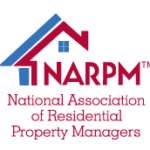Velocity of money is an economic term that refers to how quickly money changes hands within an economy. It’s often used as a key metric of an economy’s health. The faster a dollar gets spent, then re-spent, and re-spent again, the more opportunities that dollar can be taxed. The more opportunities someone might have to do something grand with their dollar, like start a business that creates taxable jobs.
This article illustrates the vehicles real estate property investors often use to build capital fast. It’s a powerful tool for real estate investors; but also crucial to our economy as a whole. It’s something economists spend considerable resources tracking & attempting to adjust on federal and state government levels, but this dynamic is often better demonstrated on city/town levels simply because the results are more readily seen.
Let’s take for example a small town that needs a traffic light; but can only afford a stop sign. If a Dairy Queen opens and becomes a popular place, the town can now charge sales tax on each ice cream cone sold. The town can also tax the Dairy Queen owner on the profit she is making.
The town can tax the employees and tax them, yet again when they spend their paychecks buying the next coolest sneakers. And this velocity of money changing hands goes on and on till the town can buy their stop light with all the tax it collected. We don’t often hear the term velocity of money in respect to property investing; because a wise investor knows the big wins often come from the long game.
This is true in the stock market and it’s true in real estate investing. The smarts on this can’t successfully be argued. But the velocity of money, when you can get it in your investing, is an incredibly powerful wealth builder; so it’s worth talking about. And, it’s certainly worth giving this dynamic back its name. Since it can easily be had in real estate investing, it’s worth an article on it.
Let’s take for example that, instead of being a small town needing a traffic light, you are a real estate investor needing to build capital quickly, or looking for a passive form of income – Imagine investing $30,000 and getting your 12% return of $3,600 and getting that same $30,000 back to reinvest in only 3 months. That means that in one year, you can invest that same $30,000, 4 times, at that rate of return (12%) that’s $14,400. As far as returns go, that’s a very good one!
Two main ways real estate investors get high velocity of money returns. One is House Flipping and the other is through being a Private Lender. House Flipping is where you purchase a property that you can improve in ways that will greatly increase its value, more than it costs you to purchase it and the improvements. Then you sell it for an expected profit. The goal is to buy the property, renovate it, and sell it as quickly as you can (velocity of money!).
House flipping is an extremely profitable way to make money and it also has the powerful dynamic of velocity of money working for you. But it often takes considerable effort – you need to find the property, get it renovated, and get it sold. But it can be greatly systemized, which can reduce some of the burden. Private Lending is a far more passive form of investing, where house flipping will likely require much of your time and energy, private lending will require you to do little more than vett the person you are lending to.
Real estate private lending is where you loan someone money to purchase a property, renovate a property, or both; but the most common loans would be on the acquisition (purchase) or on the renovation part.
Given a choice between the two, I prefer loaning on the renovation, after the borrower has already purchased the property. Why? Because the property acts as the asset that protects my investment, the buyer also has “skin in the game” since she has also invested her own money to buy the property, and I don’t need to wait the additional time it takes to purchase the property, on top of the time it will take to renovate, to get my money back (velocity of money!).
Another important reason is once the property has been found and purchased, I can better decide if this is a good investment or not. I also have slightly more time to decide, as the buyer is frantic to get the property before someone else does.
Hard Money Lending is also private lending. This refers to a private lender doing this on a more professional, and frequent level. A hard money lender typically would be marketing to create a high demand for their private lending funds.
There is a 3rd common way, that is also worth mentioning, called Wholesaling. It’s interesting as the initial financial investment might be zero and the profit might be almost instantaneous. So the velocity of money skips a step – the part where you put in your money (nice!). Let’s say you know someone will be willing to sell their property worth $100,000 for only $80,000 and you know I would be willing to buy it for $90,000. You just made $10,000 as a finder’s fee merely by introducing two people who can solve each other’s problems.
Fast capital building aside, velocity of money also allows you to be extremely diversified, and extremely reactive to adjusting to the market. Not only can you adjust by the month; but those you invest to, will also be tending to adjust as well. Diversification is never a bad thing. Okay, now it’s time to stop reading and go buy a cup of coffee so we can get the velocity of money going again.
Happy Investing!
Transcript of Velocity of Video Transcript
Intro : 00:00
Velocity Of Money : 00:33
What Is The Velocity Of Money : 01:40
How Real State Investors Use Velocity Of Money : 02:40
How Real State Investors Get High Velocity Return : 03:35






